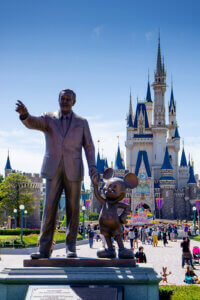|
|

This column is the third installment as we explore the seven principles that I’ve identified as vital to Walt Disney’s success as he built one of the world’s most iconic and profitable brands.
Here are the seven beliefs/habits that I believe led to Disney’s success:
- Your vision must be so clear and so well-articulated that someone else can complete it perfectly, even if you’re not there anymore.
- No detail is too small, and in fact, the smallest details have the biggest impact.
- Obstacles are road maps to innovation.
- If the team is happy, the customer is happy.
- Ask the best questions because you have to keep learning.
- You’re never done.
- Never forget who you serve and why you matter to them.
For this week’s column, I want to focus on the concept that the devil is in the details. As Walt was creating Disneyland, he drove his team nuts, making them scrap projects near completion (and putting the project behind schedule) because he felt vital details were missing. He had the unique ability to push aside his insider’s knowledge and truly see the park’s elements as a first-time visitor would see them.
Even today, almost 70 years after Disneyland opened, some of those details Walt insisted on are among the most talked-about features of the park. Perhaps the most famous is a tiny detail in the Pirates of the Caribbean attraction. As you ride through the attraction in a small boat, at one point you go under a bridge. Sitting on the bridge, with his legs dangling down, is an animatronic pirate. The first time Walt rode the attraction to give his blessing, he looked up as the boat went under the bridge and saw, for him, a glaring omission. Next time you ride Pirates of the Caribbean and notice the leg hair on the pirate sitting on the bridge, think of Walt.
That ability to see your facility, product or service through the eyes of your consumer is marketing gold. That’s when you can spot the missing details or that something is a little off. We get most of the big things right. But we miss the opportunity to plus-up the experience. It’s the surprising touches that we add to our core offering that make a customer stop and take notice.
We don’t need to do the details, but we do it anyway because we care that much. It makes our customers feel like we’ve gone out of our way just to delight them. It’s the handwritten thank-you note that you pack when you ship your product. It’s the decadent chocolate placed on a pillow. It’s picking up the phone on a weekend when a client is in crisis.
I love Walt’s attention to detail because with every nuance he and the Disney team painstakingly put into place, it reminds us that they were thinking about us and what would make the experience magical.
It also makes it talk-worthy. When we write a review or make a recommendation to a peer, we talk about those little extras that made the experience special. If you want to learn more about this marketing insight and how to create those magical extras, check out the book “Talk Triggers” by Jay Baer and Daniel Lemin. They observed in many other organizations what Walt knew instinctively.
The details matter, and they reassure your customer that you’re willing to go above and beyond to demonstrate how important they are to you.
How do you apply this to your business? If you don’t have Walt’s gift to unknow what you know and see with fresh eyes, consider using secret shoppers to help you identify where you can add the minute details that will get your customers talking.
This was originally published in the Des Moines Business Record, as one of Drew’s weekly columns.
